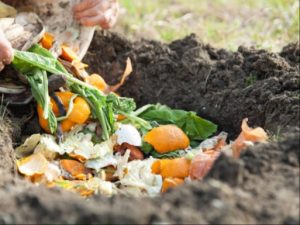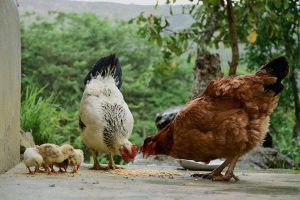An article that analyzes four ways to utilize organic waste at home.
With our environment safety and preservation being our primary priority, it is no news why enacting laws and practices through journals, media platforms and other means of information is necessary to help mitigate against the impact of waste defacement.
In a world struggling with environmental challenges, responsible waste management has become an integral part of sustainable living.
One area where we can make a big impact is by managing our organic waste. Instead of piling it up in landfills, we can recycle it in simple but productive ways.
With this in perspective, it becomes increasingly apparent why this article, seeks to provide four new ways to manage your organic waste and contribute to a healthier immediate environmenr and planet at large.
What is Organic Waste?
Simply put, organic waste refer to a type of waste that is biodegradable and has it origin in either a plant or an animal, and can be broken into carbon dioxide, methane or simple organic molecule. They are also less toxic compared to inorganic or industrial waste.
Four Ways to utilize organic waste at home
Since organic waste are made of composites that can be broken down, they can be used at home in several ways. This article will expose you to four of these ways. They include:
1. Make compost manure from organic waste

One of the four main ways of using organic waste is by composting. Composting is a natural process that turns organic waste into nutrient-rich compost, which becomes a valuable addition to any garden.
By composting at home, you can make your own compost waste, which enriches the soil and improves plant growth.
Whether you have a large garden or a small patio, composting fits everywhere. The resulting compost can then be used to grow your own food, donated to local gardens and even traded to fellow gardeners for passive income.
2.Vermicomposting(Worm composting)
Another of four ways to utilize organic waste at home is through “Vermicomposting” this is a type of composting that is achieved on a next level.
In vermicomposting, you introduce worms into the equation. These industrious creatures break down organic waste into nutrient-rich worm castings and liquid fertilizer.
The results of these are excellent for enhancing the soil texture and promoting plant health.
Vermicomposting systems are relatively easy to set up and require very little space. Whether you’re a city dweller or a suburban gardener, vermicomposting offers an environmentally friendly solution to organic waste.
3. Feed the animals with organic waste

Another efficient way to use organic waste at home is for animal feeding. For those who raise animals like chickens, rabbits, pigs and goats, organic manure can be food to your animals.
This will help reduce their environmental impact and contributing to their well-being. This approach not only helps manage waste but also bridges the gap on your local ecosystem.
4. Donate to Farmers and Composters
For the last on our list of four ways to utilize organic waste, you can donate your organic waste to farmers.
Farmers and commercial composters often need a steady stream of organic manure to improve their operations.
You can support local agricultural waste efforts by donating or selling your excess waste to these organizations.
This practical system ensures that your waste becomes a valuable resource, benefiting both the environment and the community.
Conclusion
The four ways to utilize organic waste categorically described above show that organic waste management need not be complicated or time-consuming.
Composting, vermicomposting, feeding animals, and partnering with farmers and composters are all easy ways that yield great returns.
By incorporating these ways into your activities you can actively contribute to the future sustainability while reaping the benefits of nutrient-rich soil and healthy plants.
Stay tuned for our upcoming videos, where we will go through each method in detail and walk you through the process of using it in your home. Join us to make a positive impact on the environment, one easy step at a time.
